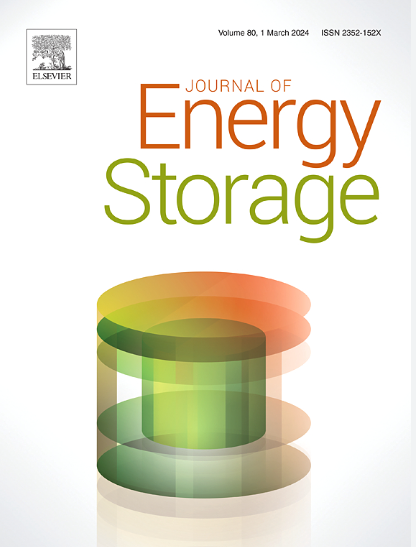Inceptive high-performance flexible aqueous aluminum-ion batteries derived from pre-intercalated copper hexacyanoferrate cathode
IF 8.9
2区 工程技术
Q1 ENERGY & FUELS
引用次数: 0
Abstract
Aqueous aluminum-ion batteries (AAIBs) have increasingly been regarded as inexpensive, non-toxic, environmentally benign, and safe energy storage devices that can replace lithium-ion batteries (LIBs) because of their potential to achieve a high energy density. They might be integrated into future technologies, such as grid storage or flexible electronics, aligning with their advantages. While the commercialization of AAIBs is challenging, as the three-electron transfer reactions of Al3+/Al are difficult to realize and its charge transfer mechanism is still debated, the use of intercalation materials such as copper hexacyanoferrate (CuHCFe) stands out as an appealing strategy to enhance their electrochemical performance. Building on this approach, we successfully developed CuHCFe intercalated with Al3+ ions and utilized the resulting material to fabricate, for the first time, a flexible aqueous aluminum-ion battery full cell where a sol-gel synthesized MoO3 anode has been incorporated. The fabricated device shows a specific capacity of 66.84 mAh g−1 at a current density of 0.5 Ag−1. It maintained a coulombic efficiency of 96.77 % over 150 cycles, with almost no capacity fading. The flexibility of the device was studied by testing bending angles of 60°, 90°, and 180°. At 0.5 Ag−1, the battery exhibited specific capacities of 65.38, 56.78, and 52.93 mAh g−1 at 60°, 90°, and 180° bending conditions, respectively, highlighting its remarkable flexibility with 79.2 % capacity retention after 180° bending.

从预插层六氰铁酸铜阴极衍生的高性能柔性水铝离子电池
水铝离子电池(AAIBs)越来越被认为是一种廉价、无毒、环保、安全的储能设备,可以取代锂离子电池(lib),因为它们具有实现高能量密度的潜力。它们可能会被整合到未来的技术中,比如电网存储或柔性电子设备,以配合它们的优势。由于Al3+/Al的三电子转移反应难以实现,其电荷转移机制仍存在争议,因此使用六氰亚铁酸铜(CuHCFe)等插层材料来提高其电化学性能是一种很有吸引力的策略。在这种方法的基础上,我们成功地开发了嵌入Al3+离子的CuHCFe,并利用所得到的材料首次制造了柔性水性铝离子电池,其中包含了溶胶-凝胶合成的MoO3阳极。该器件在0.5 Ag−1电流密度下的比容量为66.84 mAh g−1。在150次循环中,库仑效率保持在96.77%,几乎没有容量衰减。通过测试60°、90°和180°的弯曲角度,研究了该装置的柔性。在0.5 Ag−1条件下,电池在60°、90°和180°弯曲条件下的比容量分别为65.38、56.78和52.93 mAh g−1,突出了180°弯曲后的79.2%的容量保留率。
本文章由计算机程序翻译,如有差异,请以英文原文为准。
求助全文
约1分钟内获得全文
求助全文
来源期刊

Journal of energy storage
Energy-Renewable Energy, Sustainability and the Environment
CiteScore
11.80
自引率
24.50%
发文量
2262
审稿时长
69 days
期刊介绍:
Journal of energy storage focusses on all aspects of energy storage, in particular systems integration, electric grid integration, modelling and analysis, novel energy storage technologies, sizing and management strategies, business models for operation of storage systems and energy storage developments worldwide.
 求助内容:
求助内容: 应助结果提醒方式:
应助结果提醒方式:


